Posted by Bob Lefebvre
On November 27th Gord Smith photographed this sparrow in his yard in NW Calgary. This is a Brewer’s Sparrow (Timberline subspecies). This is rarely reported in the city, or this late in the year anywhere in its northern range. They should all be in the SW USA or northern Mexico by now.
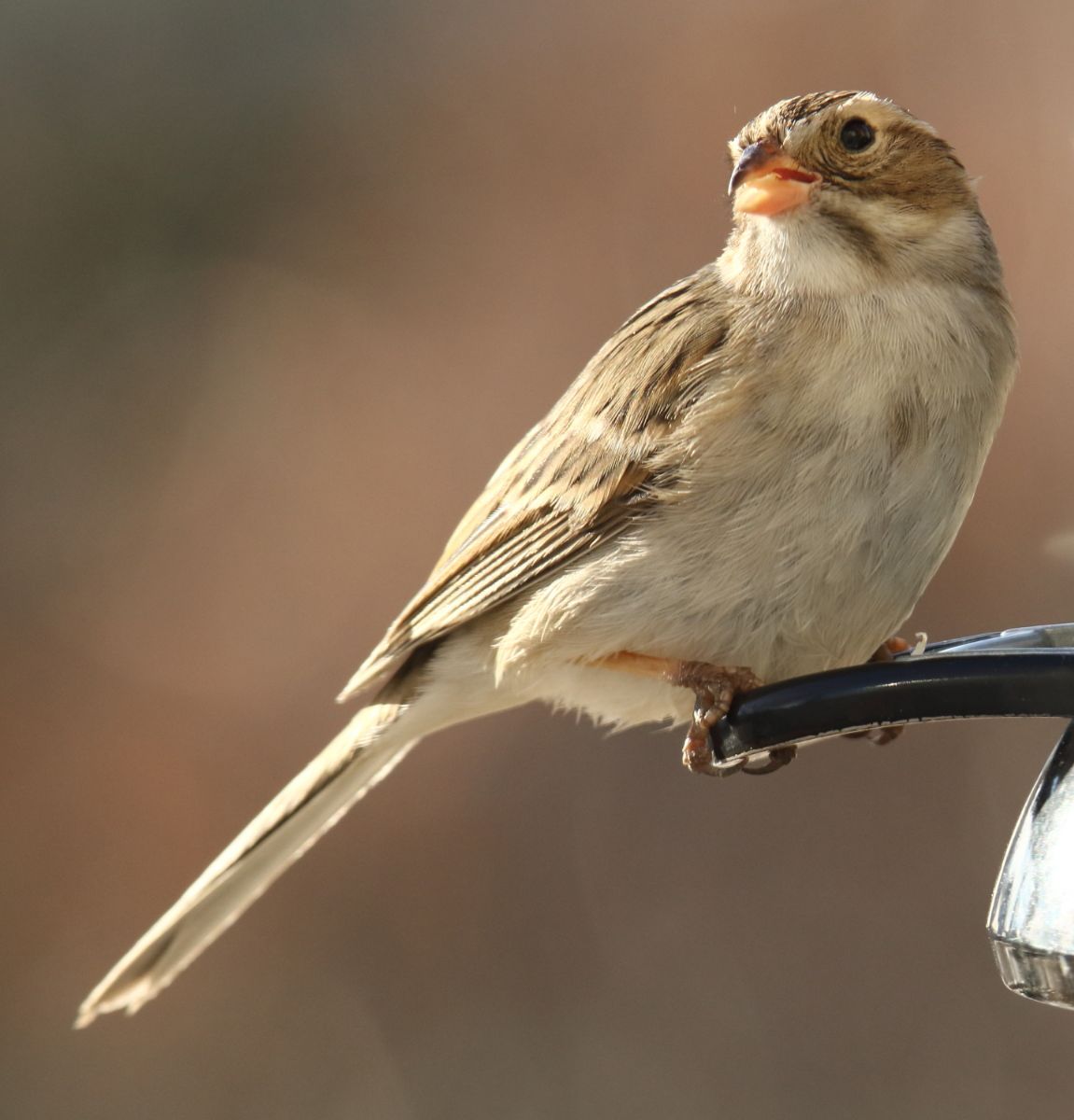
Brewer’s Sparrow, NW Calgary, November 27, 2018. Photos by Gord Smith.
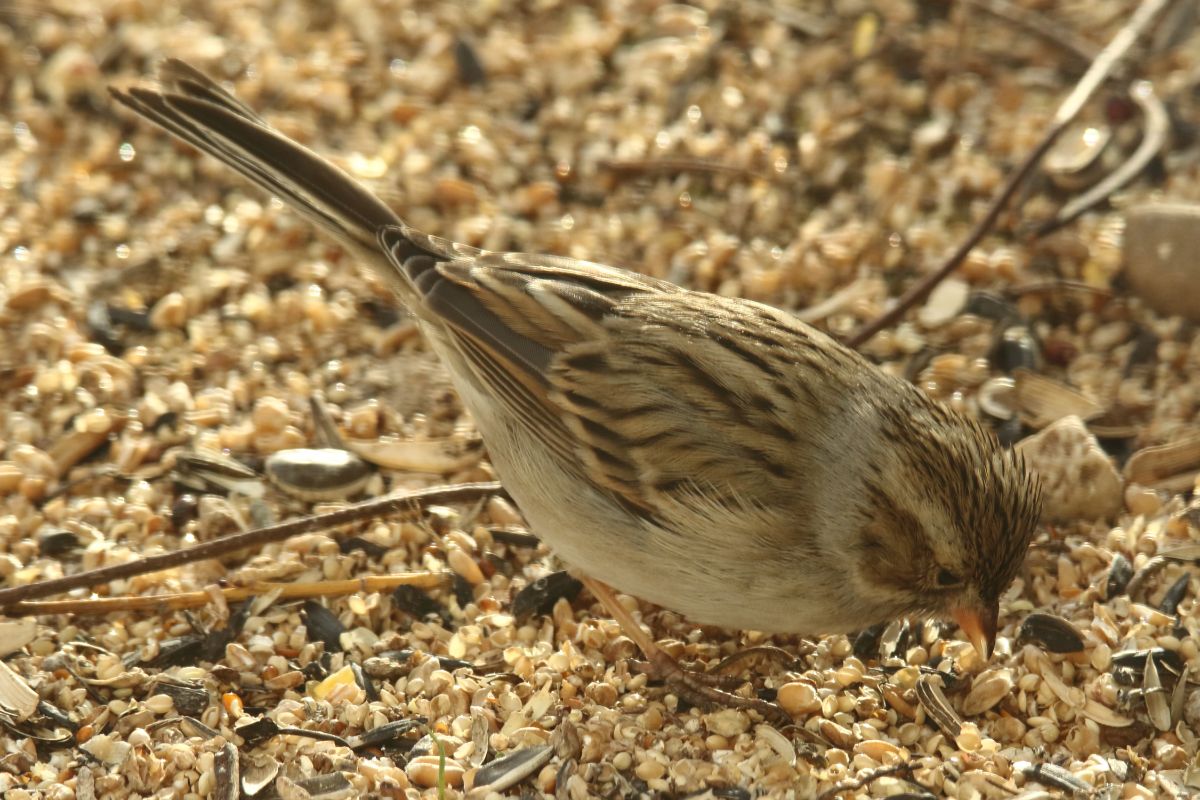
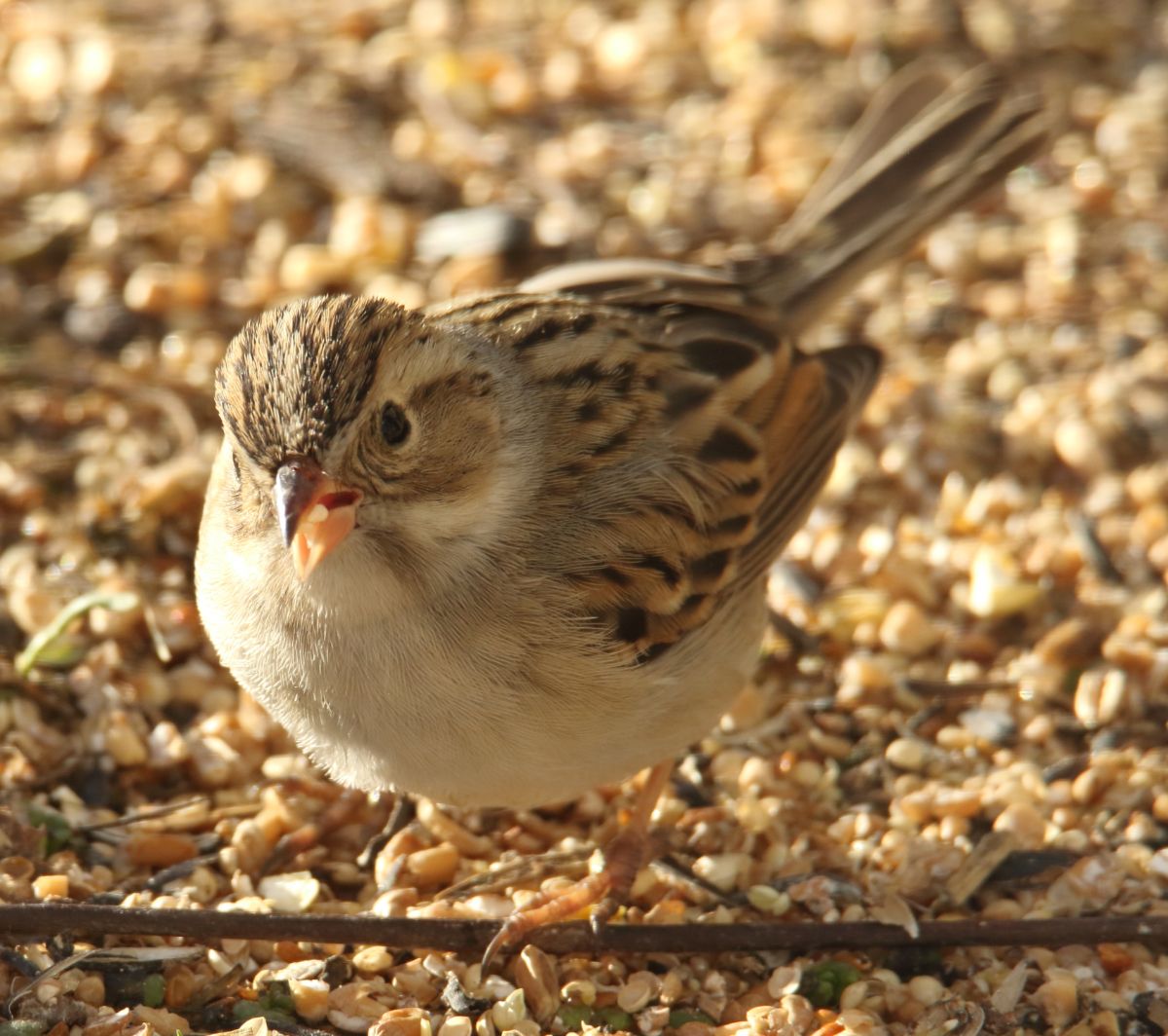
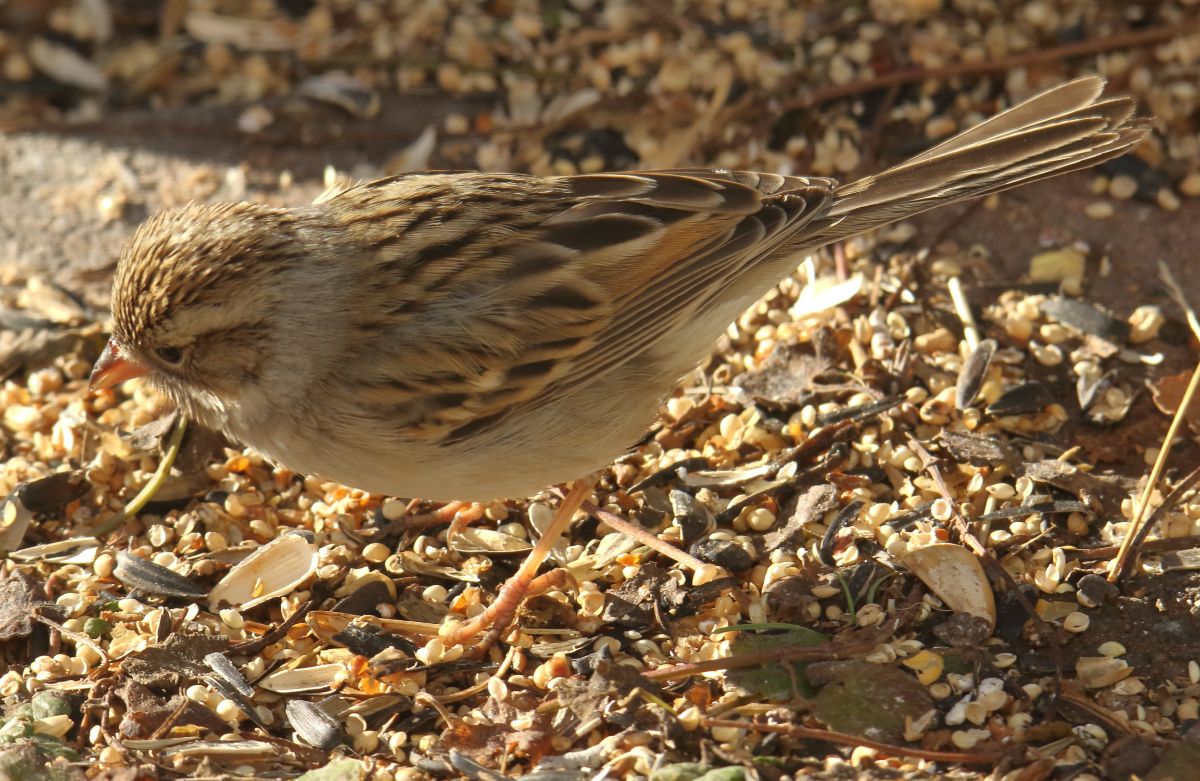
Brewer’s Sparrows are related to Clay-colored and Chipping Sparrows which also breed locally. The similarity to these in non-breeding plumage is apparent. Had this bird been in my yard I don’t think I would have known what it was. Gord was familiar with the species, and the ID has been confirmed by Richard Klauke.
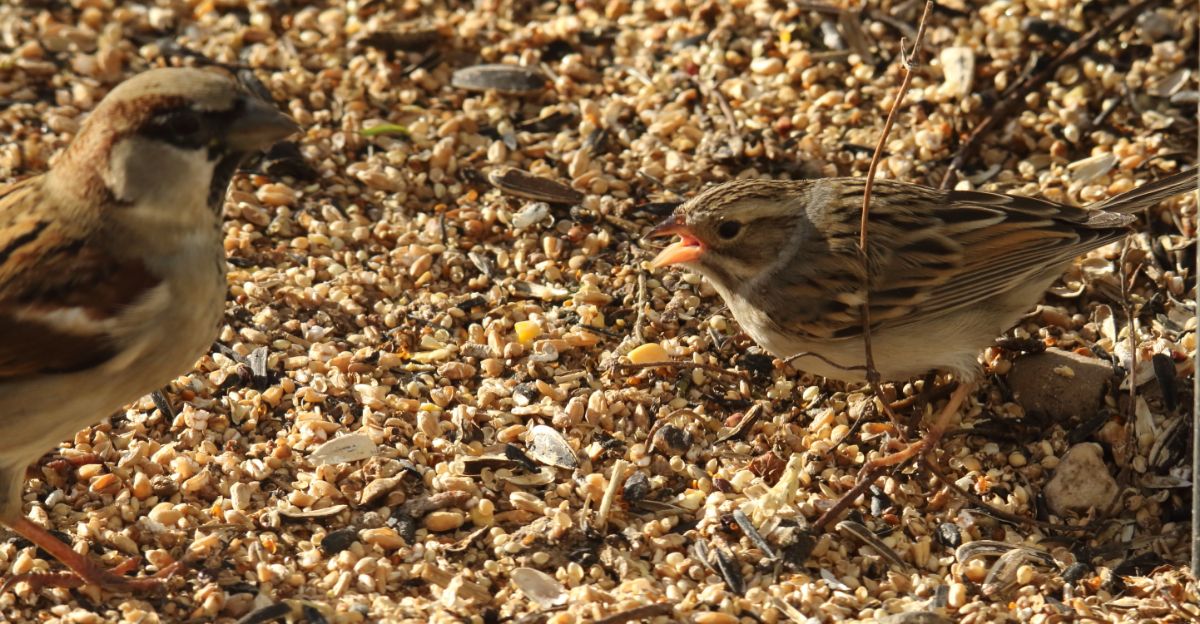
Brewer’s is the smallest North American sparrow, and in this last photo you can see just how much smaller this bird is than a House Sparrow!




